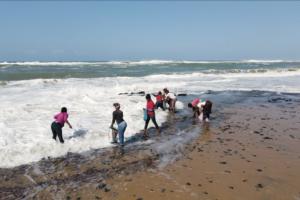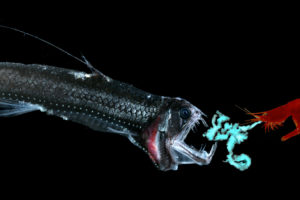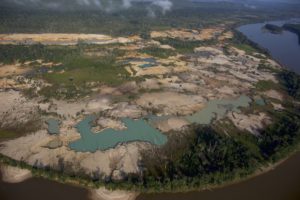这句话的简单声明性鲜明引起了人们的注意:“在2018年之前预测了美国的灭绝。”所讨论的物种是Yaqui cat鱼,很少有人听说过,更少看到(或食用)。然而,这是大陆鸿沟以西唯一的本地cat鱼,能够长达2英尺长,熟悉的晶须杠铃从下巴下垂,底部居住的cat鱼生活方式的扁平底面特征。
据一家人称新研究在日记中生物保护。即使是联邦官员和私人土地所有者的合作恢复工作,这种下降仍在继续,事实证明,在保护那里的其他水生植物方面非常成功。但是对于cat鱼来说,人口招募“基本上是零”(这意味着没有年轻一代生存),共同作者得出结论,仍然悬挂的最后几个年长的人代表了该国物种的尽头。
此外,美国灭绝的威胁与墨西哥北部较大的Yaqui cat鱼人口的麻烦相吻合。它从边界向西南延伸到加利福尼亚湾的广阔栖息地是now experiencing the same河流的沟通和排水层发生在边境美国侧面的早些时候。整个墨西哥范围内的非本地频道cat鱼也有可能使Yaqui cat鱼的最后残留物融合到遗忘中。
该物种生存的威胁与在共和党主导的美国国会中采取的行动“现代化”《濒危物种法》,根据该法案,Yaqui cat鱼受到灭绝威胁的保护。在一个上周听证会,参议员约翰·巴拉索(R-WY)提议消除“繁文tape节和官僚负担一直在影响我们创造就业机会的能力”,并阻碍了土地管理计划,住房开发和放牧牛。
The U.S. Fish and Wildlife Service was thinking primarily about protecting and restoring aquatic species like the Yaqui catfish in 1982 when it acquired a 2,400-acre ranch to create a wildlife refuge in the San Bernardino valley, an area where year-round streams, marshes, and grasslands once supported an array of indigenous wildlife. Cottonwood, willow, and other vegetation used to soak up rainwater as it flowed slowly across the relatively flat landscape, says William R. Radke, who is manager of the San Bernardino refuge and senior author of the生物保护学习。但是在1800年代后期被牛过度放牧剥夺了景观。长时间的干旱和地震活动也改变了该区域,结果偶尔降雨开始冲入该区域,从而将深入通道切入了地表。
Early ranchers “didn’t understand the resources of the West weren’t going to be there forever,” says Radke. “They just thought ‘this grass is going to last forever, let’s utilize it. This water is going to last forever.’ They found artesian water, drilled a well, and let it run, like leaving your faucet on.” The stream channel in some places “dropped 20 feet lower than it was in the 1800s,” he says. The water table dropped with it, and rivers and streams that once ran year-round instead ran dry.
圣贝纳迪诺庇护所从努力保护濒危物种的邻近牧场主中受益。
但是在过去的20年中,圣贝纳迪诺避难所及其周围的水道已经开始康复。在其他地方,私人土地所有者经常抵制恢复濒危物种的计划。拉德克(Radke)说,避难所从一群邻近的牧场主那里受益,他们“具有令人难以置信的环境道德,并做各种各样的事情来支持联邦濒危物种”。
建造岩石壁垒以备份水流,再加上其他湿地和河岸带修复工作,现在已经产生了绿色的植被边界。
“We saw a huge change,” says Josiah Austin, a local rancher who participated in the restoration program. “In certain places, you could see it within a season, and generally there was a big change over a 10-year period,” where the peaks and valleys of the old flooding cycle evened out and became less extreme. “The water just stayed in the system longer. Instead of passing through in two or three hours, it took three or four months.”
在一个West that is running out of water almost everywhere, adds Radke, “it’s one of the few places that I can think of that actually has a gaining water table.”
新池塘为受到威胁的地方性鱼类创造了栖息地,包括Yaqui Topminnow,Yaqui Chub和美丽的光泽。cat鱼在1990年代被重新引入该地区,似乎在一段时间内做得很好。拉德克说,避难所将获得诱人的报告 - 例如,从私人土地上的看守人“对猫鱼一无所知”鱼球。”Radke说:“没有少年标本出现,但是“当您试图捕获cat鱼时,有很多事情会发挥作用。”“他们饿了吗?他们在搬家吗?水温是多少?水中有植被使它们隐藏吗?”因此,当地的保护主义者仍然充满希望。
The new analysis looked more closely, however, using a standard mark-and-recapture technique: Researchers sampling a body of water mark individual catfish that turn up, release them, and then calculate the total population based on how often those marked fish turn up in subsequent sampling. The study concluded that fewer than 20 adult catfish remain in and around the refuge, and since they are all survivors of the 1,824 individuals introduced in the 1990s, all are now approaching the end of their lives.
什么地方出了错?其他鱼类也能够适应池塘栖息地代替其本地河流。鱼类和野生动物服务生态学家格兰特·哈里斯(Grant Harris)表示,对于cat鱼来说,显然仍然缺少某些东西。池塘可能太小了,或者缺乏导致鱼类繁殖的扳机 - 例如,突然的水脉冲或水温变化。或者也许cat鱼成功地繁殖,但是关于基材,缺乏原木,岩石或空腔的某些东西剥夺了年轻人的生存所需的藏身之处。
这项新研究不一定是死亡的丧钟。Radke说,研究人员继续寻找缺失的因素,而cat鱼的恢复仍然可能以相对较少的费用发生。来自两国的研究人员首先需要在墨西哥找到完整的,未脑的cat鱼种群。坚固的,无法访问的地形 - 偶尔出现毒品卡特尔暴力 - 使在设备中进行背包旅行的常规做法复杂化,以进行偏远水体的电击采样。
So the plan, instead, is to travel light and merely take a small water sample from each site. Such samples inevitably contain microscopic amounts of shed skin, feces, mucus, and other bodily products from the fish swimming there. That may be enough for inexpensive genetic sequencing methods back in the lab to identify the fish species present, a non-invasive sampling technique known as environmental DNA analysis (or e-DNA). If researchers can find unhybridized fish, the next step is to get them into a dedicated hatchery and into a variety of protected habitats in both countries. “We can do this pretty inexpensively,” says Radke. “We’re not talking hundreds of thousands of dollars. We’re probably talking about tens of thousands of dollars.”
他补充说,这是值得的,因为Yaqui cat鱼是地区和民族遗产的一部分,土著人民的传统食品来源,也是娱乐渔业的潜在基础。它的基因组可能包含特征 - 例如,更大的耐热性 - 可以提供改善其他物种的商业养鱼的手段。拉德克说,受益于cat鱼和其他物种的上升地水表也使地方农业和牛牧场受益。因此,这不是一个简单的物种保存与经济的选择。
Worsening relations between the U.S. and Mexico could delay a cooperative effort to save the Yaqui catfish.
最重要的是,Yaqui cat鱼是生态系统中一部分的重要,尽管不充分理解。Radke说,当您在汽车上工作时,“您不会撕下引擎盖并开始丢弃零件。”“也许您可以一会儿就可以逃脱。但是,如果您发生事故,也许这是阻止您穿过挡风玻璃的部分。我们不知道Yaqui Catfish在流域中扮演什么角色,但我认为我们对生态系统的了解不足以鲁ck丢弃部分。”
然而,Yaqui cat鱼的恢复可能性很小,变得越来越苗条。到目前为止,这项努力的失败也很容易成为国会中一些批评家争辩的证据,即《濒危物种法》无效。特朗普政府还表示,本月早些时候迁移了保护危险的物种,以推迟对濒临灭绝的生锈的大黄蜂的保护开始失去了大部分栖息地到大型单一养殖场和发展。美国与墨西哥之间的关系恶化也可能会延迟合作努力来拯救Yaqui cat鱼。
It’s still possible researchers will find intact specimens in Mexico before channel catfish have hybridized them out of existence. And maybe the water table in the San Bernardino refuge will recover fast enough to make a second restoration program there more successful. But with the predicted date of 2018 bearing down, the odds are that this piece of North America’s natural heritage will soon vanish forever, largely unknown and unmourned.




